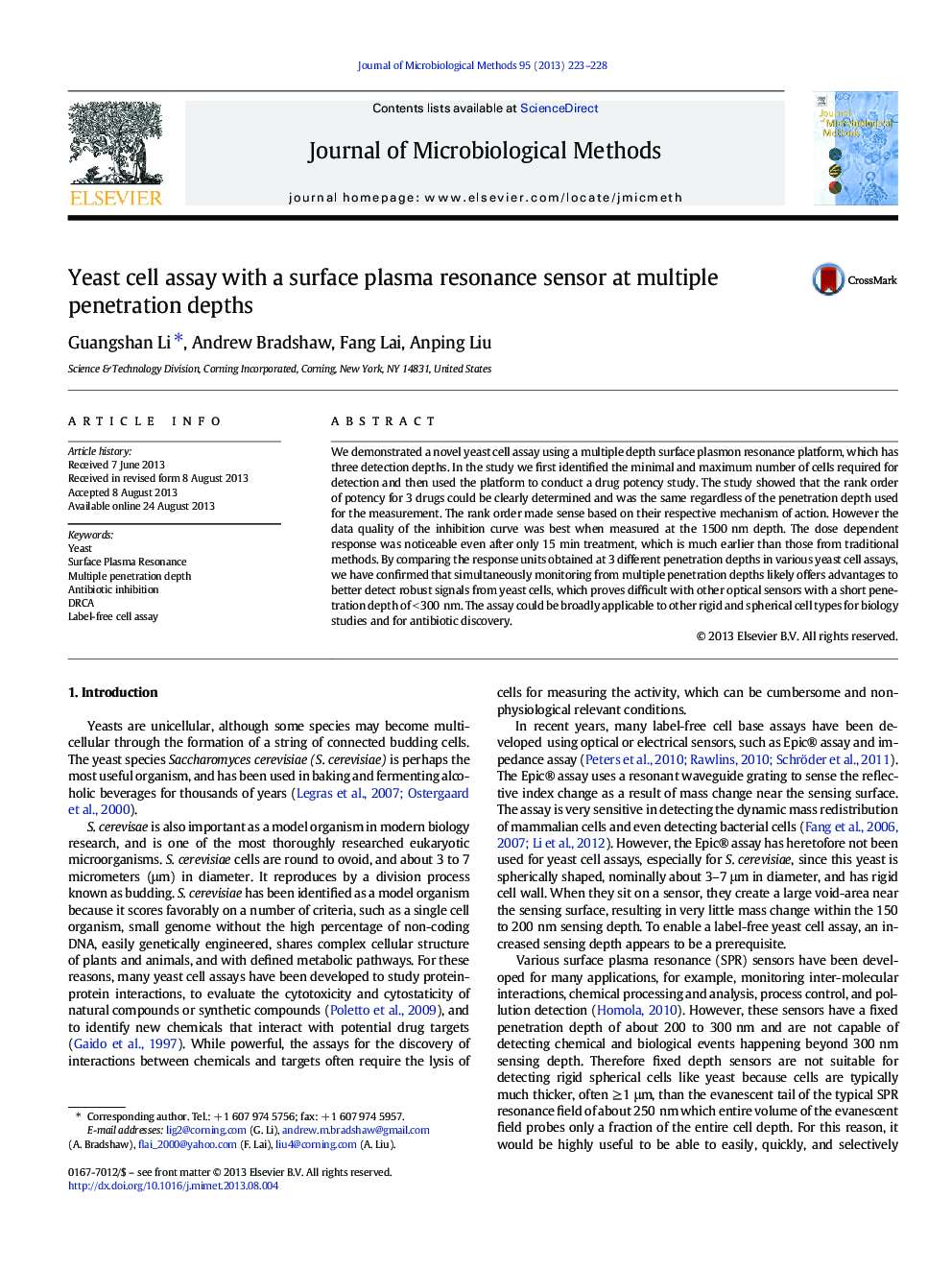| Article ID | Journal | Published Year | Pages | File Type |
|---|---|---|---|---|
| 2090040 | Journal of Microbiological Methods | 2013 | 6 Pages |
•Demonstrate a novel yeast cell assay using DRCA platform.•Achieve simultaneous detection of live cell response at 3 penetration depths.•Develop a mathematic model to differentiate responses from different laser wavelengths.•DRCA platform can detect the rigid cells.•Demonstrate a long penetration depth is better suit for a long sensing field.•Drug efficacy on yeast cells was established with our DRCA system.
We demonstrated a novel yeast cell assay using a multiple depth surface plasmon resonance platform, which has three detection depths. In the study we first identified the minimal and maximum number of cells required for detection and then used the platform to conduct a drug potency study. The study showed that the rank order of potency for 3 drugs could be clearly determined and was the same regardless of the penetration depth used for the measurement. The rank order made sense based on their respective mechanism of action. However the data quality of the inhibition curve was best when measured at the 1500 nm depth. The dose dependent response was noticeable even after only 15 min treatment, which is much earlier than those from traditional methods. By comparing the response units obtained at 3 different penetration depths in various yeast cell assays, we have confirmed that simultaneously monitoring from multiple penetration depths likely offers advantages to better detect robust signals from yeast cells, which proves difficult with other optical sensors with a short penetration depth of < 300 nm. The assay could be broadly applicable to other rigid and spherical cell types for biology studies and for antibiotic discovery.
